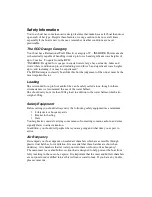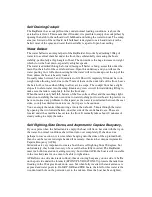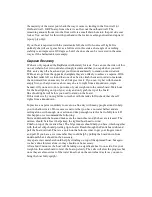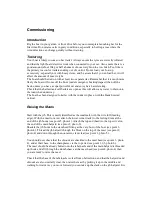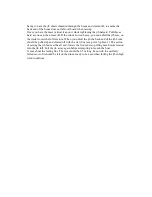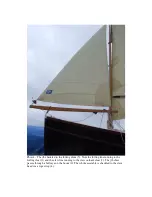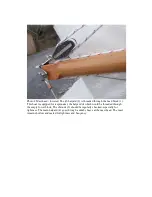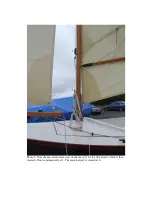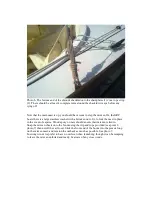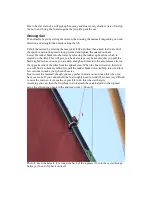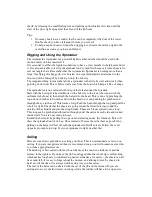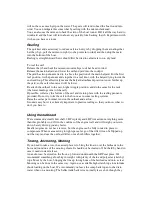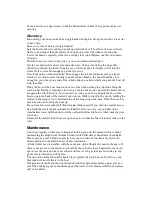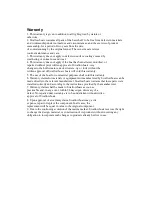
the jib by releasing the small furling line and pulling on the thicker clew line until the
clew of the jib is right up against the aft end of the jib boom.
Tips:
•
Not many boats have a rudder that be can be completely lifted out of the water.
Double check you have released it before you set sail!
•
To help keep her head to wind when rigging her, sheet in the mizzen tight to the
centreline as soon as you have unfurled it.
Rigging and Using the Spinnaker
The Asymmetric Spinnaker is a powerful light weather sail that should be used with
caution until you have mastered it.
It is essential in all but the lightest conditions to have a crew member to help hoist and set
it. It is also advisable to test rig the spinnaker on dry land first because it is much easier to
sort out tangles here. Remember that the Asymmetric Spinnaker is nothing more than a
large, free flying ulta baggy jib. it is hoisted on a seperate halyard and attached to the
front end of the bowsprit by hooking it onto the bobstay.
The important thing to remember about a spinnaker is that it is best set and struck when
pointing downwind. This is blows it all away from the boat which keeps it free of snags.
The spinnaker sets on a retractable bowsprit that cleats under the foredeck.
Start with the bowsprit retracted. Hook on the bobstay to the tack (the corner with the
sailmaker label near it) then attach the halyard to the head. This is done by pinching the
rope, about 6 inches in from the end with the bead on it, and pushing the pinched end
through the eye in the sail. This forms a loop. Push the bead through the loop and pull the
whole lot tight. Check that the sheets are going round the furled forestay, round the
outside of the shrouds and into the strop blocks. These are blocks spliced onto a loop.
This loop can be pinched and threaded through under the oarlocks each side and tucked
inside itself. You are now ready to hoist.
Extend the bowsprit by pulling the rope out and cleating under the foredeck. This will
draw the spinnaked out of its bag. Once cleated off, raise the sail as fast as possible by
pulling on the halyard. Cleat off with the spinnaker luff still curved. Follow the exact
opposite procedure to drop. Test your spinnaker in light weather first.
Sailing
Here are some basic guidelines to sailing your boat. This is not intended as a lesson on
sailing. If you are inexperienced then we recommend you go out with someone else who
is, or take appropriate lessons.
The ketch rig is best sailed with the jib out the most, the main in a little more and the
mizzen in the tightest. If you have the jib boom rigged then the whole rig is self tacking
which makes long beats to windward up narrow estuaries a lot easier – the sheets can all
be set and left. It is easy to forget about the mizzen, and although it can be sheeted in
hard a lot of the time, it is always worth easing it as you bear away.
The feel of the helm can be altered with the set of the jib and the mizzen. If you are
sailing across very shallow water in strong winds, the rudder will have to be up and so

